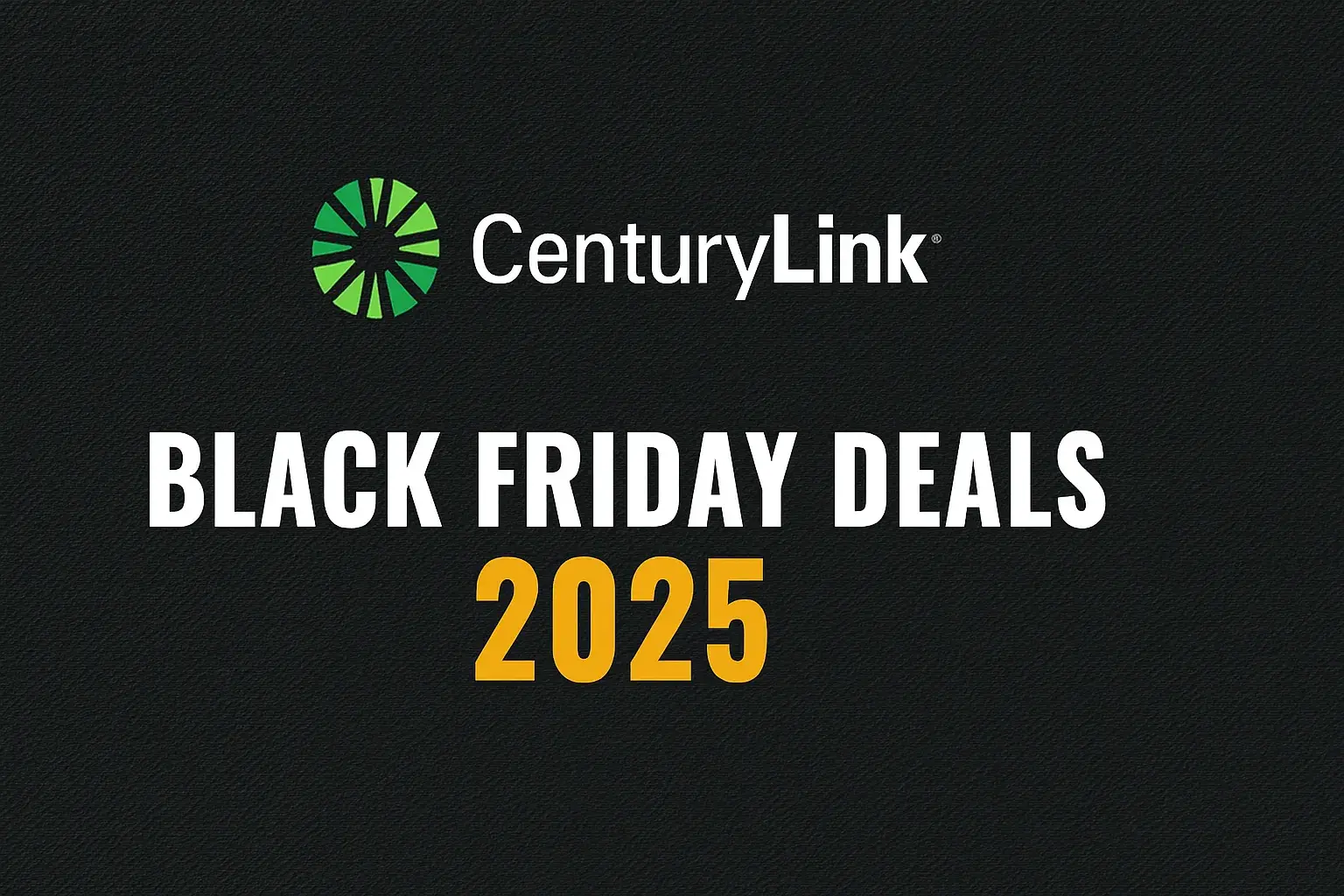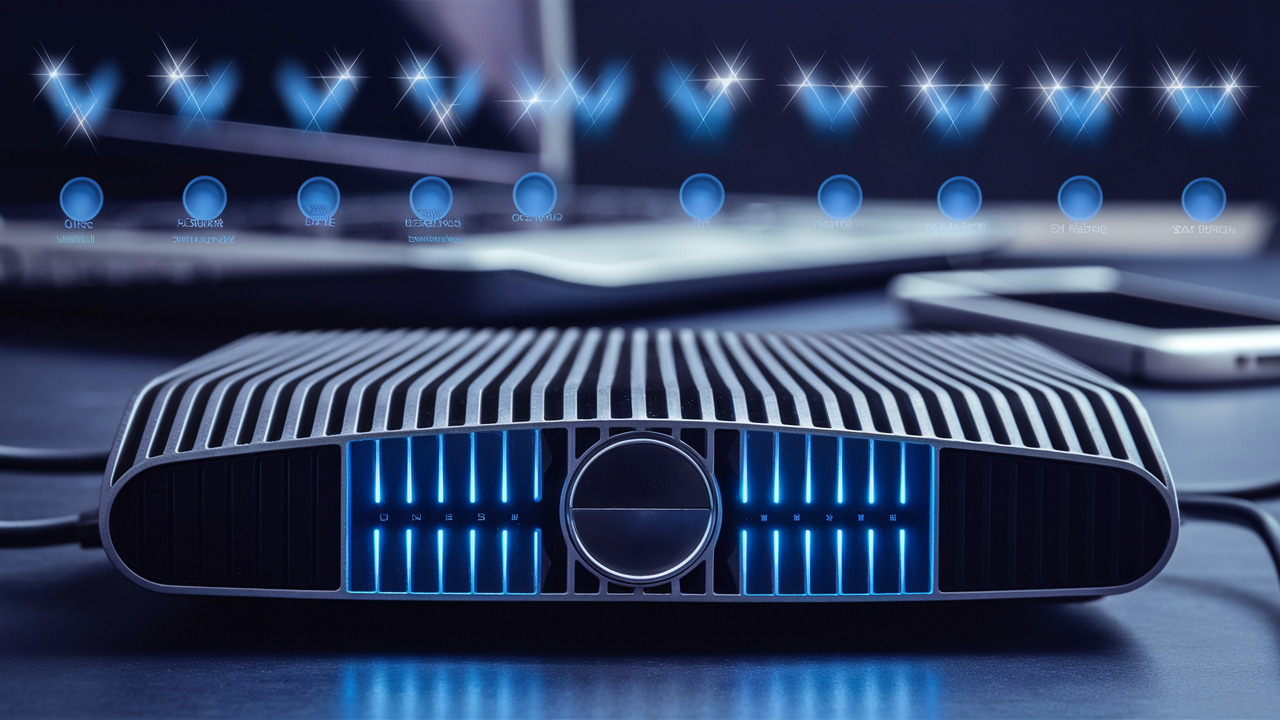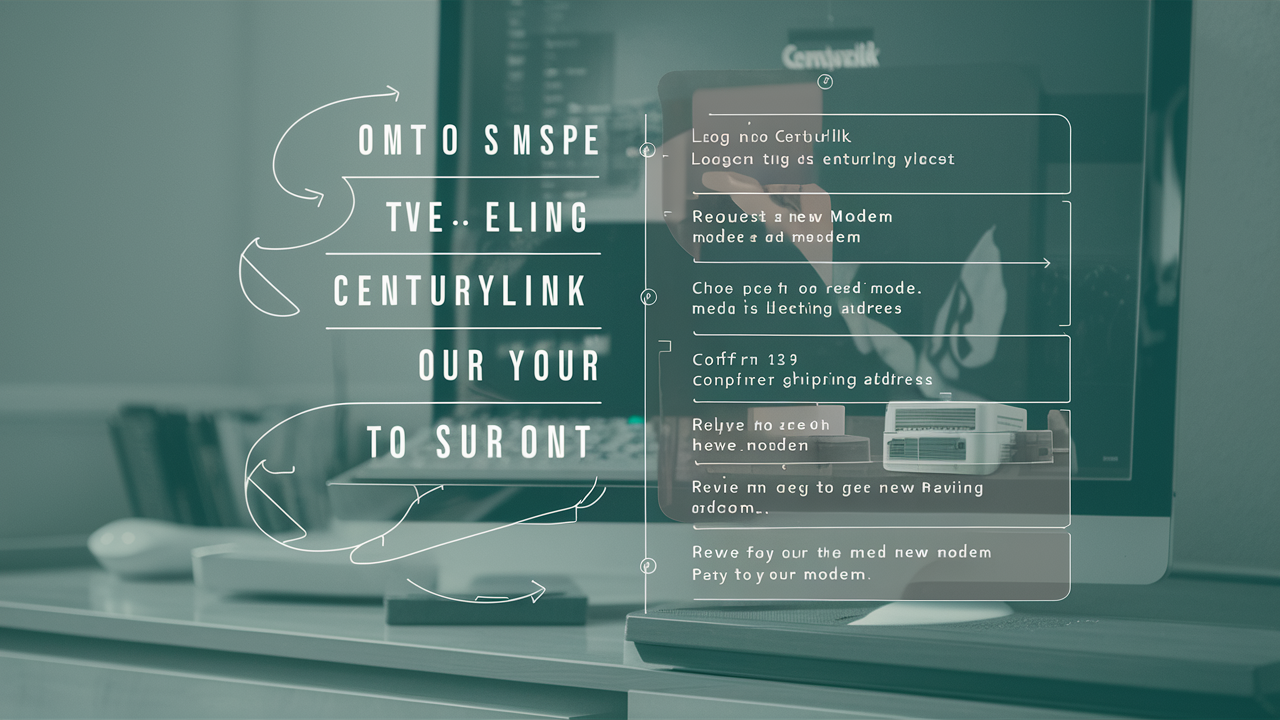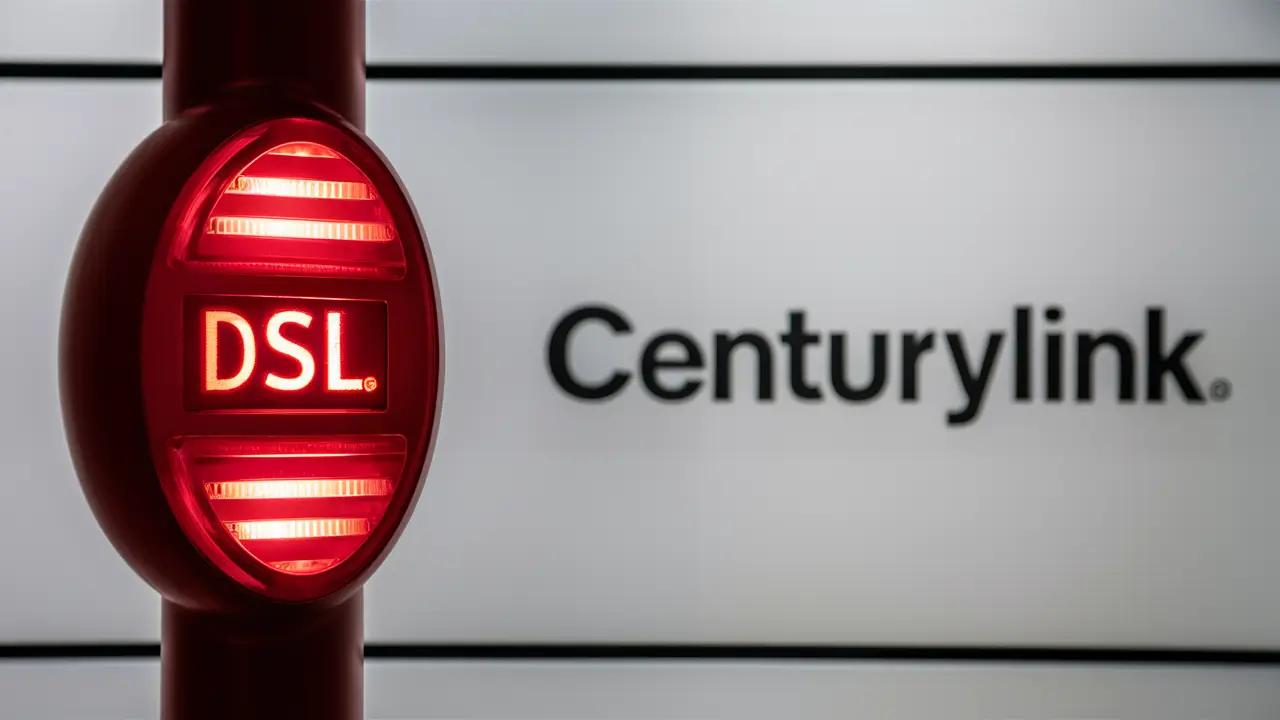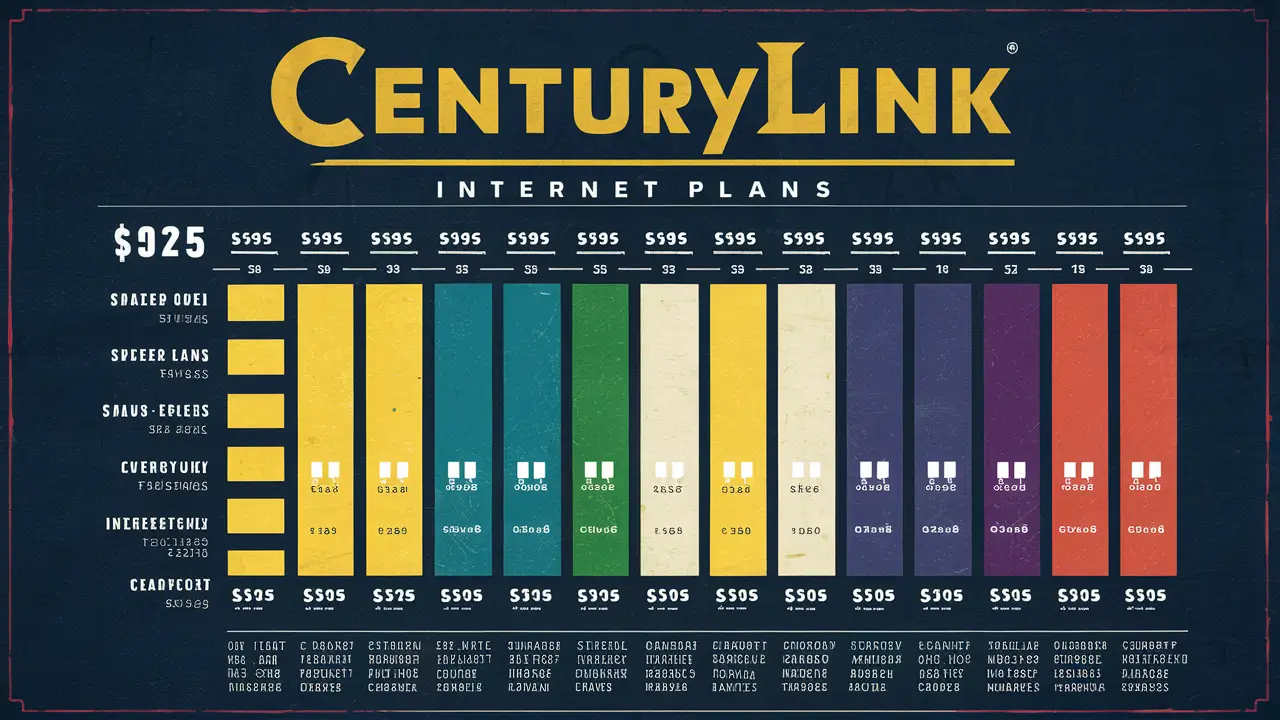Get Online for Free: Discover CenturyLink's Complimentary Internet Access

Unlock the door to the digital world without the upfront cost. This guide reveals how you can discover CenturyLink's complimentary internet access options, empowering you to connect, learn, and engage online for free. Dive in to find your pathway to connectivity.
Understanding CenturyLink's Complimentary Internet Access
In today's increasingly digital society, reliable internet access is no longer a luxury; it's a necessity. From education and employment to healthcare and social connection, being online opens up a world of opportunities. However, the cost of broadband services can be a significant barrier for many households. Recognizing this challenge, internet service providers (ISPs) like CenturyLink often participate in government-subsidized programs designed to make internet access more affordable, and in some cases, effectively free for eligible individuals and families. This section delves into the nuances of how CenturyLink facilitates complimentary internet access, exploring the programs and initiatives that make this a reality for those who need it most.
The Role of Government Subsidies
The primary mechanism through which CenturyLink offers complimentary internet access is by leveraging government subsidy programs. These programs are established by federal and state governments to bridge the digital divide, ensuring that low-income households, seniors, veterans, and other vulnerable populations have the means to connect to the internet. The most prominent of these is the Affordable Connectivity Program (ACP), which provides a discount of up to $30 per month (or up to $75 per month for eligible households on Tribal lands) towards internet service. When a household qualifies for the ACP, and CenturyLink participates in the program, the monthly cost of an eligible internet plan can be reduced to zero, effectively making it free.
CenturyLink's Participation and Offerings
CenturyLink, as a major telecommunications provider, actively participates in these subsidy programs. Their commitment to digital inclusion means they have integrated these benefits into their service offerings. When a customer applies for and is approved for a program like the ACP, they can then select an eligible CenturyLink internet plan. If the ACP discount fully covers the cost of the chosen plan, the customer receives complimentary internet service. It's crucial to understand that "free" in this context typically refers to the elimination of the monthly service charge, though there might still be potential costs for equipment installation or activation fees, depending on the specific promotion and program terms. CenturyLink's website and customer service representatives are the best resources for understanding which of their plans are eligible for these discounts and what any associated one-time fees might be.
Distinguishing "Free" from "Low-Cost"
It's important to differentiate between truly complimentary internet access and low-cost options. While subsidy programs aim to make internet free, sometimes the discount may not cover the full cost of a higher-tier plan, resulting in a significantly reduced monthly bill rather than zero cost. CenturyLink, in conjunction with these programs, often highlights specific plans that are fully covered by the ACP discount. These plans are typically designed to provide sufficient speeds for essential online activities such as browsing, email, online learning, and video conferencing. Understanding the speed tiers and data allowances associated with these "free" plans is key to ensuring they meet your household's needs.
The Importance of Research and Verification
Navigating these programs can sometimes feel complex. The eligibility criteria, application processes, and available plans can change. Therefore, prospective users are strongly encouraged to conduct thorough research directly on the official government program websites and CenturyLink's official channels. Verifying eligibility, understanding the application steps, and confirming the specific CenturyLink plan that qualifies for the full discount are essential to successfully obtaining complimentary internet access. This proactive approach minimizes confusion and ensures a smooth transition to online connectivity.
Eligibility Criteria for Free Internet
The gateway to accessing complimentary internet through CenturyLink, primarily via government assistance programs like the Affordable Connectivity Program (ACP), hinges on meeting specific eligibility criteria. These criteria are designed to target households that face the greatest financial burdens when it comes to affording essential services like broadband. Understanding these requirements is the first and most critical step in determining if you can benefit from these programs. While specific program details can evolve, the core principles of eligibility remain consistent, focusing on income levels, participation in other assistance programs, and specific demographic groups.
Income-Based Eligibility
The most common pathway to eligibility for subsidized internet programs is based on household income. Generally, if your household income is at or below 200% of the Federal Poverty Guidelines, you may qualify. The Federal Poverty Guidelines are updated annually by the Department of Health and Human Services. To determine your eligibility, you will need to know your household size and your total annual income. This figure is then compared against the poverty line for your specific state and household size. For example, in 2025, a single-person household with an annual income of, say, $28,000 might be eligible if the 200% poverty line for a single person is above that amount. Similarly, a family of four with an income below a certain threshold would also be considered.
2025 Federal Poverty Guidelines (Illustrative - Actual figures may vary and are published annually):
| Household Size | Poverty Guideline (100%) | 200% of Poverty Guideline (for ACP Eligibility) |
|---|---|---|
| 1 | $15,000 | $30,000 |
| 2 | $20,000 | $40,000 |
| 3 | $25,000 | $50,000 |
| 4 | $30,000 | $60,000 |
| 5 | $35,000 | $70,000 |
Note: These are illustrative figures for 2025. Official guidelines are released by the U.S. Department of Health and Human Services.
Participation in Other Assistance Programs
Beyond income, participation in certain federal assistance programs is another strong indicator of eligibility. If anyone in your household is enrolled in programs such as:
- The Supplemental Nutrition Assistance Program (SNAP)
- Medicaid
- Supplemental Security Income (SSI)
- Federal Public Housing Assistance (FPHA)
- Veterans Pension and Survivors Benefit
- Tribal programs for food distribution or housing assistance
Then your household is likely eligible for discounted or free internet services without needing to prove income separately. This streamlines the process for individuals already receiving support from these vital government initiatives. Proof of enrollment in one of these programs will be required during the application process.
Tribal Land Eligibility
Specific provisions are made for households residing on Tribal lands. Residents of federally recognized Tribal lands may be eligible for a higher monthly discount ($75 instead of $30) through the ACP. This recognizes the unique challenges and higher costs often associated with providing broadband services in these areas. Eligibility for Tribal land residents is typically determined by their primary residence being located on such lands and meeting the general program requirements.
Specific Program Requirements
Each subsidy program may have its own nuances. For instance, the ACP requires that the internet service be used by an eligible household for:
- Connecting to the internet for remote work or education.
- Accessing telehealth services.
- Connecting with family and friends.
- Accessing online government services and information.
- Participating in online job searches.
The service must also be provided by a participating ISP, such as CenturyLink. It's also important to note that typically only one ACP benefit can be applied per household. A household is defined as a group of people who live together and share income and expenses. This definition is crucial for preventing multiple applications from the same residential address.
Documentation Required
To prove eligibility, applicants will need to provide documentation. This might include:
- Recent tax returns or pay stubs (for income-based eligibility).
- A copy of an award letter or benefit statement (for participation in other assistance programs).
- Proof of residency on Tribal lands.
The Affordable Connectivity Program website is the official portal for applications and provides detailed information on required documentation and the application process.
How to Apply for CenturyLink Assistance Programs
Securing complimentary internet through CenturyLink involves a structured application process, primarily facilitated through the Affordable Connectivity Program (ACP) or similar initiatives. While CenturyLink is the provider, the initial qualification and enrollment typically occur through the government program's portal. This section provides a step-by-step guide to help you navigate the application journey successfully, ensuring you can leverage these vital resources to get online without financial strain.
Step 1: Determine Your Eligibility
Before you begin the application, confirm that you meet the eligibility criteria discussed in the previous section. This includes checking your household income against the Federal Poverty Guidelines or verifying if you participate in any qualifying assistance programs like SNAP, Medicaid, or SSI. You can find the most up-to-date Federal Poverty Guidelines on the HHS website. Understanding your eligibility upfront will save time and prevent unnecessary application steps.
Step 2: Gather Necessary Documentation
To support your application, you will need specific documents. The exact requirements can vary slightly, but generally, you should have:
- Proof of Identity: A government-issued ID (driver's license, state ID, passport).
- Proof of Income (if applicable): This could be recent pay stubs, a copy of your most recent federal income tax return (Form 1040), or a Social Security statement.
- Proof of Participation in Assistance Programs (if applicable): An official letter or statement from the program (e.g., SNAP benefit letter, Medicaid card, SSI award letter) showing your enrollment.
- Proof of Residency: A utility bill or lease agreement showing your current address.
Having these documents ready will expedite the application process. Ensure all documents are current and clearly legible.
Step 3: Apply to the Affordable Connectivity Program (ACP)
The primary application is made directly to the ACP. You have two main ways to apply:
- Online Application: Visit the official ACP website at www.affordableconnectivity.gov. This is the fastest and most recommended method. You will be guided through an online form where you can upload your supporting documents.
- Mail-in Application: You can download an application form from the ACP website and mail it along with your supporting documents to the designated address. This method is slower but available for those who prefer not to apply online.
During the application, you will be asked to provide your personal information, household details, and the documentation that proves your eligibility. You will also need to designate your preferred internet service provider. While you can indicate CenturyLink at this stage, the ACP approval is independent of your ISP choice.
Step 4: Receive Your ACP Approval and Number
Once your application is processed and approved by the ACP, you will receive an official notification. This notification will include your unique ACP application number or username. This number is crucial for linking your ACP benefit to your CenturyLink service.
Step 5: Enroll with CenturyLink
After receiving your ACP approval, you can now enroll with CenturyLink. There are several ways to do this:
- Online: Visit the CenturyLink website and look for a section dedicated to the Affordable Connectivity Program or government assistance. You will likely be prompted to enter your ACP application number or username to verify your eligibility and apply the discount to an eligible plan.
- By Phone: Call CenturyLink customer service. Inform them that you have been approved for the Affordable Connectivity Program and wish to enroll in a service plan that qualifies for the ACP discount. Have your ACP approval information ready.
- In-Person: If CenturyLink has local retail stores, you may be able to visit one to complete the enrollment process.
CenturyLink representatives will guide you through selecting an eligible internet plan. They will confirm that the ACP discount will be applied, making your monthly service charge zero or significantly reduced. They will also clarify any potential one-time fees for installation or equipment, if applicable.
Step 6: Installation and Service Activation
Once you've selected a plan and enrolled, CenturyLink will schedule a service installation if needed. This might involve a technician visiting your home to set up the necessary equipment, such as a modem or router. After installation, your internet service will be activated, and you can begin enjoying your new connectivity.
Important Considerations:
- Program Changes: Stay informed about any changes to the ACP or other subsidy programs. Information can be found on the FCC website.
- CenturyLink's Specific Plans: Not all CenturyLink plans may be eligible for the full ACP discount. Ensure you select a plan designated as ACP-eligible.
- One Benefit Per Household: Remember that only one ACP benefit is allowed per household.
By following these steps diligently, you can effectively apply for and obtain complimentary internet access through CenturyLink's participation in vital government assistance programs.
Alternatives to CenturyLink Free Internet: Exploring Other Options
While CenturyLink's participation in programs like the Affordable Connectivity Program (ACP) offers a significant pathway to free or heavily subsidized internet, it's wise to explore all available avenues. The digital landscape is vast, and various providers and initiatives are dedicated to bridging the digital divide. This section outlines alternative options that individuals and families can consider if CenturyLink's offerings don't fully meet their needs or if they wish to compare different solutions for obtaining internet access.
Other Major ISPs Participating in ACP
CenturyLink is not the only ISP that partners with the ACP. Many other national and regional internet providers also offer plans that can be fully covered by the ACP discount. These include, but are not limited to:
- AT&T: Offers low-income internet plans that can be subsidized by the ACP.
- Verizon: Similar to AT&T, Verizon provides options that can be made free with the ACP benefit.
- Spectrum (Charter Communications): Spectrum's "Internet Assist" program, when combined with the ACP, can offer free or very low-cost internet.
- Xfinity (Comcast): Comcast's "Internet Essentials" program is designed for low-income households and can be further discounted by the ACP.
- Local and Regional Providers: Many smaller, community-focused ISPs also participate in the ACP. These might offer different service types (like fiber or fixed wireless) or have more localized customer support.
The key is to check the ACP website or contact various providers directly to see which of their plans are eligible for the full $30 (or $75 on Tribal lands) discount. Comparing the speeds, data caps (if any), and any associated fees (like installation) across different providers is essential for making the best choice.
Low-Income Internet Programs (Non-ACP)
Even if the ACP were to sunset or if a household doesn't qualify for it, some ISPs offer their own standalone low-income internet programs. These programs are often funded by the providers themselves or through partnerships with local governments or non-profits. Examples include:
- Internet Essentials by Comcast: This program offers internet service at a low monthly cost to eligible low-income customers, even without the ACP.
- AT&T Access: A low-income internet plan from AT&T that offers affordable monthly rates.
- Lifeline Program: While primarily known for phone service, the Lifeline program also offers discounts on broadband internet service for eligible low-income consumers. Some households may qualify for both Lifeline and ACP benefits, though rules apply.
Researching these specific programs on each ISP's website will provide details on eligibility and pricing. It's important to note that the ACP is generally more comprehensive and offers a larger discount than many standalone low-income plans.
Community and Municipal Broadband Initiatives
In recent years, there has been a growing movement towards community-owned and municipal broadband networks. These initiatives aim to provide affordable, high-speed internet access to underserved areas, often with a focus on public good rather than profit. While not always "free," these networks often offer competitive pricing and are designed to be accessible to all residents. Examples can be found in cities and towns across the country that have invested in their own fiber optic networks. Checking with your local government or community development office can reveal if such an initiative exists in your area.
Public Wi-Fi and Hotspots
For immediate, albeit less consistent, internet access, public Wi-Fi is a valuable resource. Many libraries, community centers, coffee shops, and public transportation systems offer free Wi-Fi. While this isn't a substitute for reliable home internet, it can be useful for occasional browsing, checking emails, or accessing essential online services. Some mobile carriers also offer limited free Wi-Fi hotspots, and certain cities have launched public Wi-Fi initiatives.
Mobile Hotspot Devices and Plans
Some individuals may find that a mobile hotspot device, either a dedicated unit or using their smartphone's tethering capabilities, can serve as an alternative. While data limits can be a concern, some mobile plans offer unlimited or high-data allowances. For households that primarily need internet for a few devices and have lighter usage, this could be a viable option, especially if bundled with a phone plan. However, the cost of data can quickly add up, making it less economical than a subsidized broadband plan for consistent use.
Comparing Options: A Practical Approach
When evaluating alternatives, consider the following:
1. Speed and Reliability: What are your internet usage needs? Basic browsing requires less speed than streaming HD video or online gaming. Reliability is also key for work and education.
2. Data Caps: Does the plan have a data limit? Exceeding it can lead to extra charges or throttled speeds.
3. Equipment Costs: Are there one-time fees for modems or routers?
4. Contract Length: Are you locked into a long-term contract?
5. Customer Service: What is the provider's reputation for customer support?
By systematically comparing these factors across CenturyLink's ACP-eligible plans and other available alternatives, you can make an informed decision that best suits your household's connectivity requirements and budget.
Maximizing Your Free Internet Connection
Obtaining complimentary internet service through programs like the Affordable Connectivity Program (ACP) is a significant achievement, but maximizing its benefits requires a strategic approach. This isn't just about having a connection; it's about using it effectively and efficiently to enhance your daily life, education, and work. This section provides practical tips and insights on how to make the most of your free internet, ensuring you leverage its full potential without encountering common pitfalls.
Understanding Your Plan's Capabilities
The first step to maximizing your free internet is to understand the specifics of the plan you've enrolled in. "Free" often means the monthly service fee is covered, but the plan itself will have certain characteristics:
- Speed: Most ACP-eligible plans are designed for essential use, offering speeds that are adequate for browsing, email, social media, and standard-definition video streaming. If your plan's speed is insufficient for your needs (e.g., for remote work requiring video conferencing or large file downloads), explore if upgrading to a slightly higher-tier plan that might still be fully or partially covered by the ACP is an option.
- Data Caps: While many subsidized plans offer unlimited data, some may have data caps. Be mindful of your data usage to avoid exceeding limits, which could result in throttling (slowed speeds) or additional charges if not carefully managed. Utilize Wi-Fi whenever possible to conserve mobile data if you use your phone as a hotspot.
- Included Equipment: Confirm whether the free service includes a modem or router. If not, or if the provided equipment is outdated, inquire about options for upgrading, noting any potential one-time costs.
Visit the CenturyLink website or consult your service agreement for detailed information about your specific plan.
Optimizing Your Home Network
A robust home network ensures you get the best possible performance from your internet connection:
- Router Placement: Position your Wi-Fi router in a central location, away from obstructions like thick walls, metal objects, or large appliances that can interfere with the signal. Elevating the router can also improve its reach.
- Wi-Fi Channel Optimization: If your router allows, experiment with different Wi-Fi channels. Many routers automatically select the best channel, but manual adjustment can sometimes improve performance, especially in densely populated areas with many competing Wi-Fi signals.
- Regular Reboots: Periodically restarting your modem and router (e.g., once a week) can resolve minor connectivity issues and improve performance by clearing temporary glitches.
- Secure Your Network: Always use a strong, unique password for your Wi-Fi network to prevent unauthorized access, which can slow down your connection and compromise your security.
Prioritizing Essential Online Activities
With a free connection, it's tempting to use it limitlessly. However, prioritizing ensures you always have bandwidth for critical tasks:
- Education and Learning: Utilize the internet for online courses, research, homework help, and educational resources. Platforms like Coursera, Khan Academy, and educational portals provided by schools are invaluable.
- Employment and Job Seeking: Access online job boards, submit applications, attend virtual interviews, and participate in remote work. Ensure you have a stable connection during crucial work hours or interviews.
- Healthcare Access: Leverage telehealth services for appointments, access your medical records online, and research health information from reputable sources.
- Communication: Stay connected with family and friends through email, video calls, and social media.
Utilizing Free Resources and Tools
Your free internet connection opens doors to a wealth of free online resources:
- Public Domain E-books and Audiobooks: Websites like Project Gutenberg and LibriVox offer vast collections of classic literature.
- Free Online Courses: Platforms like edX, Coursera (audit option), and FutureLearn offer free access to courses from top universities.
- Open Source Software: Download and use free alternatives to paid software, such as LibreOffice for productivity or GIMP for image editing.
- Government Services: Access essential government information, apply for benefits, and complete forms online through official government portals.
- News and Information: Stay informed through online newspapers, reputable news websites, and educational documentaries available on platforms like YouTube.
Managing Usage and Preventing Overload
To ensure a smooth experience, especially during peak usage times:
- Schedule Bandwidth-Intensive Activities: If possible, schedule activities like large downloads or software updates for off-peak hours (e.g., late at night or early morning) when network congestion is typically lower.
- Limit Simultaneous Streaming: If multiple people in the household are streaming video simultaneously, consider lowering the video quality on some devices to ensure a smoother experience for everyone.
- Close Unnecessary Tabs and Applications: Browsers and applications running in the background can consume bandwidth. Close any that you are not actively using.
Staying Informed and Compliant
Finally, staying informed about the program you're enrolled in is crucial for maintaining your complimentary service:
- Annual Recertification: Be aware of any annual recertification requirements for the ACP or other programs. Failing to recertify can lead to the loss of your benefit.
- Changes in Eligibility: If your household's circumstances change (e.g., income increases, you no longer qualify for a listed assistance program), you must report these changes.
- Program Updates: Keep an eye on official announcements from the FCC or the program administrator regarding any changes to the program's rules or benefits.
By actively managing your connection, optimizing your network, and staying informed, you can ensure your free internet service remains a valuable asset for your household.
The Future of Free Internet Access
The concept of "free" internet access, particularly through initiatives like the Affordable Connectivity Program (ACP), represents a significant step towards digital equity. However, the long-term sustainability and evolution of such programs are subjects of ongoing discussion and development. Understanding the potential future landscape of free and subsidized internet access is crucial for individuals and policymakers alike. This section explores the trends, challenges, and potential innovations that will shape how people access the internet without prohibitive costs.
Sustainability of Current Programs
The Affordable Connectivity Program, while highly successful, has faced funding challenges. Its future hinges on continued congressional appropriations. If sustained, programs like the ACP will likely continue to be the primary mechanism for providing free or deeply discounted internet. However, the possibility of reduced funding or program changes necessitates exploring alternative and complementary solutions. Policymakers are constantly evaluating the program's effectiveness and cost-benefit, which will influence its longevity and the level of benefits offered.
Technological Advancements and Cost Reduction
As technology advances, the cost of providing internet service is expected to decrease. Innovations in fiber optics, 5G wireless technology, and satellite internet (like Starlink) are making high-speed internet more accessible and potentially more affordable. As infrastructure costs decline and deployment becomes more efficient, ISPs may be able to offer lower-cost plans, further reducing the reliance on subsidies for basic connectivity. Furthermore, the development of more efficient network management and transmission technologies could lead to lower operational costs for providers, which could be passed on to consumers in the form of lower prices.
Increased Role of Municipal and Community Broadband
The trend towards municipal and community-owned broadband networks is likely to grow. These networks are often built with the primary goal of serving residents affordably, rather than maximizing profit. As more communities invest in their own infrastructure, they can offer competitive pricing, and in some cases, even free basic internet tiers funded through local taxes or partnerships. This decentralized approach can provide greater local control and tailor services to community needs, potentially offering a more sustainable model for universal access.
Public-Private Partnerships and Innovation
The future may see more innovative public-private partnerships aimed at expanding internet access. These collaborations could involve:
- Infrastructure Sharing: ISPs and government entities could collaborate on sharing existing infrastructure to reduce deployment costs.
- Digital Literacy Programs: Partnerships could focus not only on providing access but also on educating users on how to effectively and safely utilize the internet, maximizing the value of the connection.
- Targeted Subsidies: Beyond general income-based subsidies, future programs might offer more targeted support for specific groups, such as students needing reliable internet for remote learning or individuals undergoing job retraining.
The Digital Divide and Evolving Needs
While the goal is to eliminate the digital divide, the definition of "essential" internet access continues to evolve. As more services move online, the baseline speed and reliability required for full participation in society will likely increase. Future programs may need to adapt to provide higher speeds or more robust service to truly bridge the gap. The focus will shift from simply getting online to ensuring meaningful and equitable access that supports economic opportunity, education, and civic engagement.
Potential Challenges and Considerations
Several challenges will shape the future:
- Funding Sustainability: Ensuring consistent and adequate funding for subsidy programs remains a primary hurdle.
- Digital Literacy: Simply providing access is not enough; ensuring individuals have the skills to use the internet effectively is critical.
- Privacy and Security: As more data is transmitted online, concerns about privacy and cybersecurity will continue to grow, requiring robust safeguards.
- Geographic Disparities: Rural and remote areas often present unique challenges for internet deployment, requiring specific solutions and investments.
- Provider Participation: Ensuring sufficient ISP participation in subsidy programs is vital for offering choice and competition.
The journey towards universal, affordable internet access is ongoing. While programs like the ACP provide immediate relief, the long-term vision involves a multi-faceted approach combining technological innovation, policy support, community initiatives, and a commitment to digital equity. The future promises more accessible internet, but it will require continuous adaptation and collaboration to ensure no one is left behind in our increasingly connected world.
In conclusion, discovering and securing complimentary internet access through CenturyLink is a tangible reality for many eligible households, primarily facilitated by the Affordable Connectivity Program. By understanding the eligibility criteria, diligently following the application process, and exploring all available alternatives, you can unlock the digital world without financial strain. Maximizing this free connection involves optimizing your home network and prioritizing essential online activities, ensuring it serves as a powerful tool for education, employment, and connection. The future of free internet access is evolving, with technological advancements and community-driven initiatives paving the way for broader digital inclusion. Take the first step today to explore your options and connect to the opportunities that await online.
